|
|
György Kurtág (Composer, Arranger) |
|
Born: February 19, 1926 - Lugoj, Romania (previously in Hungary) |
|
Biography |
|
György Kurtág is a Hungarian composer of contemporary music. He was born at Lugoj in Romania, not far from the birthplace of fellow Hungarian György Ligeti. Both young composers hoped to study with Béla Bartók in Budapest in 1945, but B. Bartók died in America. In 1940, he studied piano with Magda Kardos and composition from Max Eisikovits, at Temesvár (Timisoara, Romania). He then moved to Budapest in 1946, enrolling in the Ferenc Liszt Academy of Music, studying composition with Sándor Veress and Ferenc Farkas, as well as piano with Pál Kadosa and chamber music with Leó Weiner. Kurtág officially became a Hungarian citizen in 1948. In the early part of the 1950's, he continued his studies of composition, chamber music, and piano. He was an outstanding student, winning the Erkl prize in 1954 and 1956. Among his early works was a Korean Cantata which expressed solidarity with the North Koreans in the Korean War against the USA, but he reached the age of 33 before he was willing to give any of his works opus numbers.
In the early 1950's the Stalinist regime in Hungary proscribed B. Bartók's later works, and immediately his music became a rallying call for artists taking a stand against authoritarianism. Also banned in Hungary until the mid-1950's was the music of Arnold Schoenberg, and middle and late-period Igor Stravinsky. To escape this creative straitjacket György Kurtág moved to Paris in 1957 to study music with Olivier Messiaen, Darius Milhaud and Max Deutsch. He also had consultations with the Hungarian art psychologist Marianne Stein, and it was her advice that would prove most influential on his future development. While in Paris he wrote his first String Quartet, designating it 'opus 1' to mark a decisive break from his compositions to date. He returned to Budapest in 1958, stopping for a few days in Cologne where he first heard recordings of Stockhausen's Gruppen and Ligeti's recent electronic music. This experience would also prove important in formulating his new compositional voice.
Though the standard of living in democratic France was no doubt higher than communist Hungary, György Kurtág returned home as repetiteur of soloists with the Hungarian National Philharmonia throughout most the 1960s. In 1967 he was appointed professor at the Ferenc Liszt Academy of Music, Budapest, first of piano, then of chamber music. In 1971, he had his second appointment in the west. This time it was a one-year stay in West Berlin as grantee of the DAAD scholarship. His reputation began to gain more ground. He officially retired from the Academy in 1986. During his time his pupils included the renowned pianists András Schiff and Zoltán Kocsis.
After his retirement from the Liszt Academy in 1986, György Kurtág lived in Germany and Austria. In 1987, one year after leaving Hungary, he immediately became a member of the Bayerische Akademie der Schönen Künste, Munich, as well as a member of the Akademie der Künste, Berlin. His works were getting more sought after, and he was relentlessly sought after as an instructor.
Living at a comparatively brisker, international pace, in 1993 György Kurtág was awarded the Prix de Composition Musicale by the Fondation Prince Pierre de Monaco, for his Grabstein für Stephan and Op. 27 No. 2 (Double Concerto); the Herder Prize by the Freiherr-vom-Stein Stiftung, Hamburg; and the Premio Feltrinelli by the Accademia dei Lincei, Rome. That same year (1993), Kurtág was invited to stay in Berlin as composer-in-residence with the Berliner Philharmoniker for two years, and his op. 33 Στηλη (Stele) was written for the orchestra.. This was followed by a residency with the Wiener Konzerthaus and, in 1998, the Kossuth Prize from the Hungarian states for his life's work. |
|
Music |
|
György Kurtág is one of the more highly esteemed composers of the late 20th century. He is not well known outside of Europe, writing little and not prone to acts of self-promotion. Most composers would not have been able to establish a career in this manner.
What little he had written demonstrated itself as the work of genius, beginning with the brief Quartetto per archi opus 1 from 1959. A perfect synthesis of Webern and B. Bartók, this work has an undistracted intelligence about it, a courage that intellectuals required to survive the tyranny of the Soviets. He did seem entirely at odds with the Communists, having written some works with anti-American sentiment, but this appeared exclusively before his visit to Paris in the 1950's. The 1960's and 1970's were been fairly uneventful, and his catalog continued to grow at a startlingly slow rate. However, what works he had written made a large impression.
György Kurtág had carved his place in the Western world while still behind the Iron Curtain, emerging in the 1980's as an indisputably necessary voice. His musical language is highly individual, but it reflects several influences including J.S. Bach, B. Bartók, Alban Berg, L.v. Beethoven, and Messiaen. The crucible that forged Kurtág's music ranges from Guillaume de Machaut, whose music he transcribed for piano, through French Gothic architecture to the plays of Samuel Beckett, the novels of Dostoevsky and the writings of Goethe. He speaks Romanian, Hungarian, German, French, Russian, Ancient Greek and English, and his linguistic skills are evident in the texts he has set, which include Blok, Sappho, Hölderlin, and Kafka.
Many of György Kurtág's compositions are for chamber groups. Messages of the late Miss R.V. Troussova Op. 17 for soprano and chamber ensemble (on poems of Rimma Dalos) was premiered in Paris in 1981 and established his reputation, while the earlier chamber concerto for soprano and piano Sayings of Péter Bornemisza is also frequently performed. His quasi una fantasia… Op. 27 no. 1, first performed in 1988, was the first of several works that exploited spatial effects, an interest that dates back to his encounter with Gruppen in 1958. More recently Kurtág has written for symphonic forces, and among the champions of his larger works is Simon Rattle who programmed Grabstein für Stephan, which surrounds the audience with instruments, with Mahler's Second Symphony in a widely acclaimed Wiener Philharmoniker concert at the 1999 Salzburg Festival. This twelve minute work is an elegy for the singer, husband of Kurtág’s psychology teacher Marianne Stein. |
|
Works (Selection) |
|
wo op. Viola Concerto
Op. 1 String Quartet No. 1 (1959)
Op. 2 Wind Quintett
Op. 3 Eight Pieces for piano
Op. 4 Eight Duos for violin and cimbalom
Op. 5 Signs for viola
Op. 6c Splinters for cimbalom
Op. 6d Splinters for piano
Op. 7 The sayings of P. Bornemisza for soprano and piano
Op. 9 Four Capriccios for soprano and chamber ensemble
Op. 11 Four Songs to poems by János Pilinszky op. 11 for bass voice and ensemble
Op. 12 S. K. Remembrance Noise for soprano and violin
Op. 13 Hommage a András Mihály for string quartet (1977-1978)
Op. 14d Bagatelles for flute, double-bass and piano
Op. 15b The Little Predicament for piccolo, trombone and guitar
Op. 15c Grabstein für Stephan for guitat and instrumental groups (1989)
Op. 15d Hommage a Robert Schumann for Clarinet, Viola, and Piano
Op. 16 Omaggio a Luigi Nono (to poems by Anna Akhmatova and R. Dalos) for mixed voices
Op. 17 Messages of the Late R. V. Troussova for soprano and chamber ensemble
Op. Attila József Fragments for soprano
Op. 24 Kafka-Fragmente for soprano and violin
Op. 27/1 ... quasi una fantasia ... for piano and chamber ensemble
Op. 27/2 Double concerto for piano, violoncello and ensemble
Games (Játékok) 7 Volumes so far
Op. 28 Officium breve in memoriam Andreae Szervánszky for string quartet (1988-1989)
Op. 33 Stele for orchestra (1994)
Op. 35a Hölderlin-Gesänge for baritone
Op. 36 ...pas à pas - nulle part...(poems by Beckett) for baritone, string trio, percussion
Op. 42 Concertante for Violin, Viola and Orchestra (2005) |
|
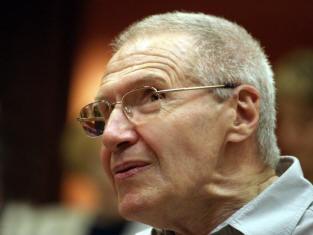
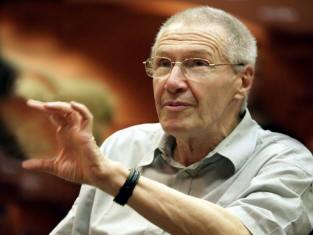
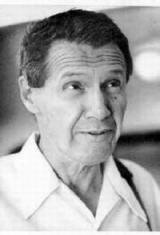
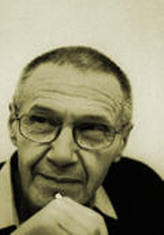
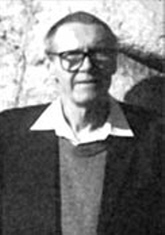
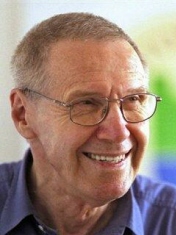
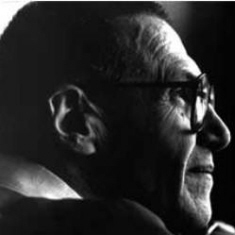
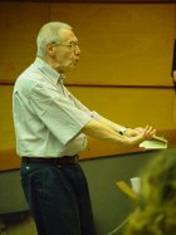
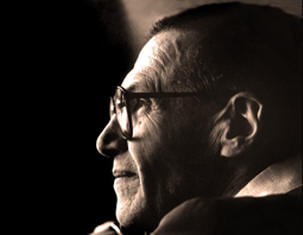
|
|
Sources:
|Wikipedia Website
All Music Guide Website (Author: John Keillor)
Contributed by Aryeh Oron (April 2007) |
|
György Kurtág : Short Biography | Piano Transcriptions: Works | Recordings |
|
Links to other Sites |
|
György Kurtág (Wikipedia) [English]
György Kurtág (Wikipedia) [German]
Kurtág György (Wikipédia) [Hungarian]
György Kurtág (Wikipedia) [Dutch]
György Kurtág - Biography (AMG)
Editio Musica Budapest
György Kurtág (Bossey & Hawkes)
Universal Edition Music Publisher: György Kurtág - Biography
Central Europe Review - Music: Gyorgy Kurtag |
|
Bibliography |
| |
|
|